Wilkins Plaza and the Memorial to the Enslaved People of George Mason located at the center of George Mason University's Fairfax Campus were officially dedicated in 2022 as part of Mason's 50th Anniversary celebrations.

Honoring His Work and His Words
The plaza, named for the late Roger Wilkins, famed civil rights leader, Pulitzer Prize-winning journalist, and former Robinson Professor of History and Culture, is designed to be a spatial manifestation of dialogue between past, present, and future.
Plaque inscriptions and a dramatic black granite water feature commemorate Wilkins's words.
The memorial invites visitors to contemplate the importance of dialogue in the reconciliation of the beliefs of the nation's founders with their participation in slavery.
This subject permeated much of Wilkins' work.
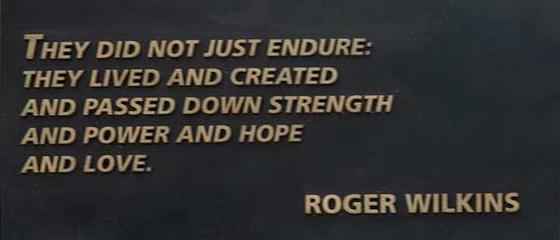
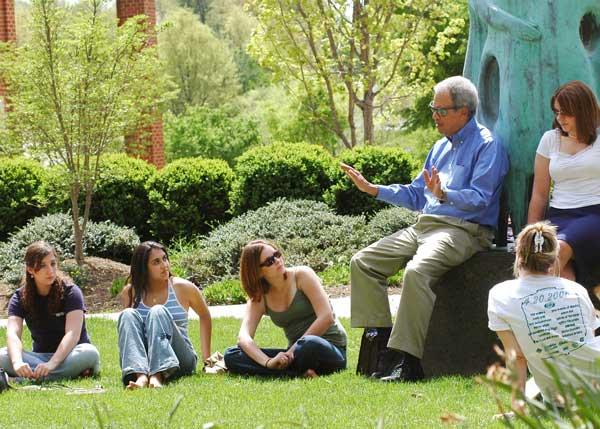
The memorial on Wilkins Plaza draws on research conducted for the student-led Enslaved People of George Mason Project, which sought to unearth the stories of those people who were enslaved at Gunston Hall, and provides a more complete account of the complicated legacy of George Mason IV, a founding father who championed individual freedom while owning slaves.
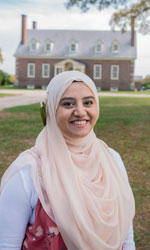
“It is important for our campus community to recognize that our university's namesake enslaved blacks and that his Declaration of Rights did not extend to those he enslaved — because we can only begin to move forward once we have accepted our past,” she said. “Through the project, we can start doing that at Mason. I applied [to] and then chose to join the project so that I could be a part of this important work.”
Origins of the Project
When searching through the George Mason website for a summer job, Ayman Fatima saw a position that sparked her interest.
The Enslaved Children of George Mason project was looking for a research assistant to help share the untold stories of those who were enslaved by George Mason the man.
“This was something that I wished we had focused on more in class,” said Fatima, who double majored in systems engineering and government and international politics.
“The men who designed American democracy owned other human beings, taking from them their liberty and creating an inherently unequal system.”
The memorial honors two of the more than 100 people enslaved at Mason’s home of Gunston Hall—a 10-year-old girl named Penny, and James, Mason’s manservant.
Designed by Perkins & Will, the plaza is meant to convey the hidden voices of the enslaved and the traditional voice of George Mason, and to provide space designed for visitors to reflect and share their voices.
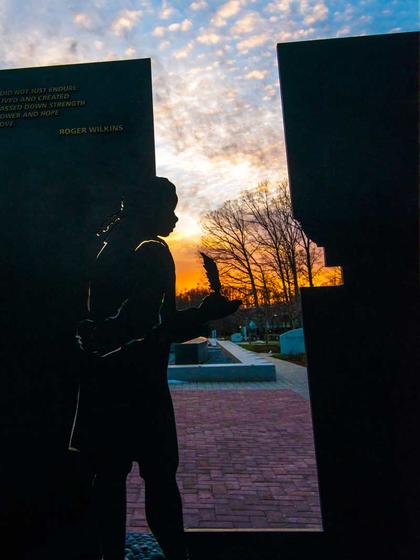
Memorial Dedicated at Formal Ceremony
Several hundred people assembled on the Fairfax Campus April 4, 2022, for the dedication of the Enslaved People of George Mason memorial in what Mason President Gregory Washington called “a landmark day for the university.”
The event on Wilkins Plaza was uplifting and reflective, and kicked off Mason's 50th anniversary celebration.
“The Enslaved People of George Mason Memorial represents so much about who we are as a university,” Washington said. “Inquisitive students who seek truth, undergraduate research programs that support these academic pursuits, faculty who collaborate, nurture and challenge our students, and a university community fueled by the shared thrill of discovery and the determination to turn their efforts into positive and sustainable change. … We grow wiser from examining our full truths, no matter how complicated or messy or discomforting they might be.”
Read more about the memorial's dedication.
Seeking a Complete Picture

The project originated at a time when many universities are examining their histories with enslaved people.
"What we discovered, as faculty and students, is that we still have to wrestle with slavery as an institution even if we were not complicit as an institution in the system of slavery," said Wendi Manuel-Scott, a professor of history and art history at George Mason and the former director of the African and African American Studies Program.
Watch a Video about the Enslaved People of George Mason Research Project
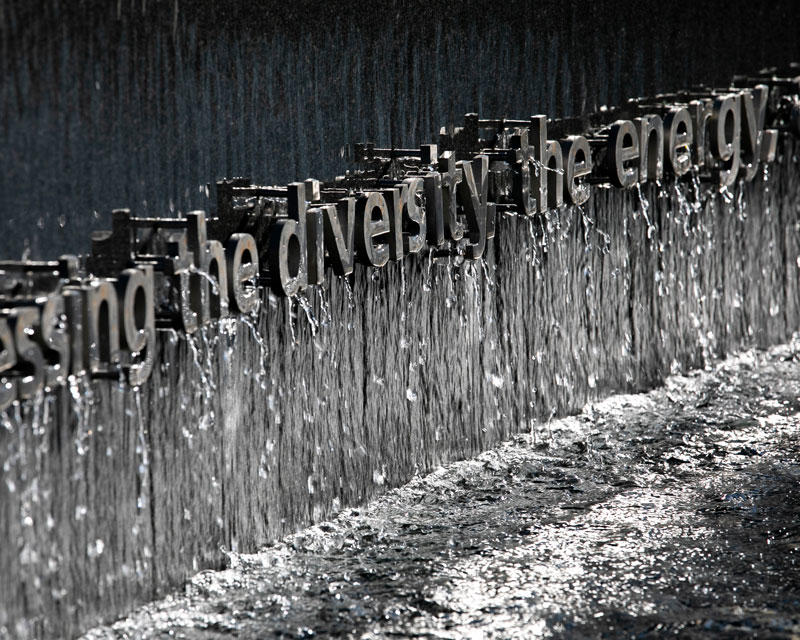
Explore the Wilkins Plaza project, named for Civil Rights leader Roger Wilkins.
